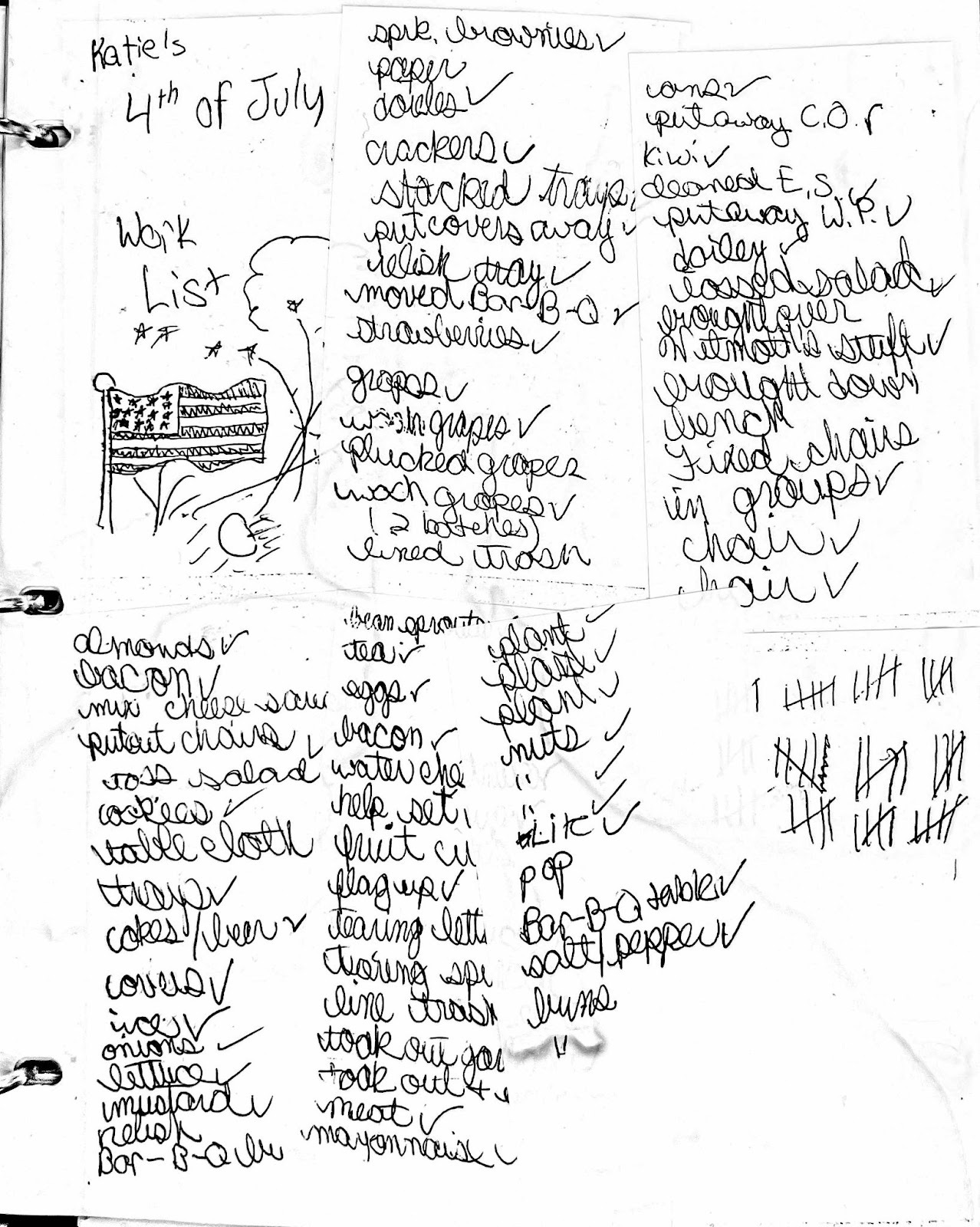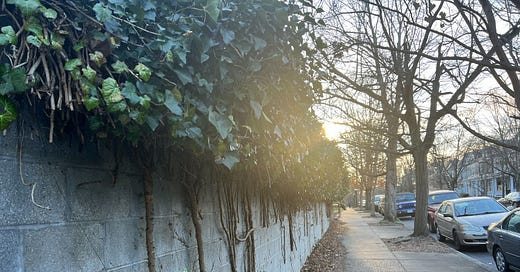In the late ‘90s, I was an editor for a division of Time Inc. headquartered in Birmingham, Alabama. How I ended up there is a very long story, but here’s what you need to know: We published lots of magazines, including Southern Living, Cooking Light, and Weight Watchers. And because so many of those magazines published recipes, we had our own test kitchens or TKs.
One morning, one of the team leaders called a TK-wide meeting to teach everyone something she’d recently learned. She proceeded to stage the “Big Rocks, Little Rocks” experiment created by Stephen Covey of “7 Habits” fame. Also sometimes called “First Things First” and “The Eisenhower Method,” this demonstration is designed to illustrate that a paradigm shift can help you achieve the big things while you simultaneously manage all the little things. Watch this video if you’re not familiar (or if you just want to see some ridiculous ‘90s fashion):
“Do you ever feel like you get bogged down in the thick of thin things?” Covey asks Elizabeth. And then Elizabeth, who directs an international firm (whatever that means), proceeds to struggle with big rocks labeled “Q2,” “relationships and family,” “major project,” “vacation,” etc.
In the TK version of the demonstration, there were only three big rocks: The Father, the Son, and the Holy Spirit. I kid you not. It was very clear to me that this woman had no business preaching about Jesus at work. What wasn’t clear to me back in 1998—just a few years after Covey introduced this concept—was that the whole experiment is rigged.
It’s easy to be distracted by the simplicity of Covey’s solution. Putting the big rocks in first really does make it possible for you to squeeze in the little ones, too. But it works because Covey not only chose how big the bucket would be, but how many big rocks you have to work with and how many little rocks would compete for space. Neither you, nor I, nor Elizabeth from the demo have that kind of control over our lives.
Oliver Burkeman, who has devoted his professional life to studying and writing about productivity, calls out the fallacy of this experiment in his most recent book, Four Thousand Weeks. (The title comes from the fact that if you live to be 80 years old, your life will have lasted 4,000 weeks.) The thesis of Burkeman’s book is that 4,000 weeks is too small a container for all we expect it to hold. “The real problem of time management today,” he explains, “isn’t that we’re bad at prioritizing the big rocks. It’s that there are too many rocks.” And so, the more time we spend trying to make everything fit, the more time we’ll spend on the least meaningful things.
If you know me, or if you’ve been reading Skin of Our Teeth for a while, you know that I like to get shit done. (I even wrote about it here.) I love lists and itineraries and shared calendars and communal Google Docs. And as this checklist from the early 1980s illustrates, I’ve been that way since long before Google existed.

But the to-do list of a child is finite. And the to-do list of an adult is never-ending. While that seems obvious as I type it, I didn’t absorb the ramifications of the difference until I read How to Keep House While Drowning by KC Davis. She writes:
As children, many of us are taught we cannot rest or play until our chores are done. This is because our parents desire to teach us the good values of responsibility, delayed gratification, care for our environment, and respect for our family. This arrangement works quite well because as a child your chores are finite. Usually a short list: make your bed, take out the trash, and fold your laundry, etc. So we finish this list and move on without guilt. However, once we become adults, this list of care tasks is not finite. It is a never-ending list of tasks that repeat themselves daily.
As adults we can’t put off rest or play until our chores are done because they’ll never be done. I think this explains — in large part — why I’m so bad at relaxing. There are just too many rocks. And I’m really bad at ignoring even the little ones.
The rock analogy is also a crappy one because it’s so passive. It assumes that the number of rocks and the size of those rocks stay the same throughout adulthood. But they don’t. Take my career, for instance. I worked full-time, then part-time, then was a stay-at-home, then full-time again, then part-time again. The same goes for motherhood: I’ve been a mother to one, then two, then three kids. All three were big rocks, but in certain situations — a medical emergency, a social crisis, a rebel phase — suddenly one (or more) of them became a boulder.
Then, the nest began to empty. The oldest went to college in 2018. Three years later, the middle kid left home, and now only the youngest lives under our roof. And while I still do plenty of parenting, it’s not the kind 24/7/365 chaos that fills your bucket (and empties your tank).
So these days I’ve got a lot more time. Time to exercise, time to travel, time to read the books that smart folks like Burkeman and Davis write. With one teenager at home, I get enough sleep to be rational and realize that my work is endless, but my time is finite. And that, according to Burkeman, is pivotal.
Once you stop believing that it might somehow be possible to avoid hard choices about time, it gets easier to make better ones. You begin to grasp that when there’s too much to do, and there always will be, the only route to psychological freedom is to let go of the limit-denying fantasy of getting it all done and instead focus on doing a few things that count.
So what counts? That’s what I’m trying to figure out. Which reminds me of an anecdote about Toni Morrison. When she was asked how she wrote her first novel as a single mother working a full-time job, she answered: “I wrote a list of things I had to do. I found 63. Then I wrote another of things I wanted to do. I found two—write and mother my children.”
Morrison was only 39 when she published that book, The Bluest Eye. I’m 51. And I’m sometimes embarrassed that I still don’t have that kind of clarity. My “want-to-do” list isn’t as short as Morrison’s, but reading and writing are near the top. So is enjoying my empty-ish nest with my husband and spending more time with my parents. The “have-to-do” list is still ridiculously long. But I’ve finally given myself permission to ignore a lot of those pebbles and make myself the biggest rock of all.
Also on my mind
How did our choice of kitchen appliances become a partisan issue? Greg Harris provides some clarity amidst the chaos and confusion in God. Guns. And Gas Stoves?
Surprise, surprise: Women have been misled about menopause.
This NYT piece on Future Cringe is beautifully designed and thought provoking. What’s on my list? Eating meat (which I still do) and American football.
I heard a lot about Hey email when it debuted two years ago. I signed up to try it, then chickened out. But another content strategist recently mentioned that she was migrating to the tool, so I decided to take a second look, and, man, am I glad I did. You spend a couple of weeks training the tool, then important messages (from real people) go in the Imbox, newsletters and such go in The Feed (which you scroll through like social media, never deleting a thing), and order confirmations, receipts, etc. go in The Paper Trail. You use the Focus & Reply feature to respond to emails you’ve set aside when you have time, and the Bubble Up feature to move emails to the top of your inbox later. I cannot express how much more organized and less anxious I feel now that I’m using this software, which costs $99/year. 10/10 recommend.
Now that I’m nearly old enough to play the role of grandma Sylvia Simon, Are You There God? It’s Me Margaret. is finally a feature film.
S’well makes salad bowls now. There goes your last excuse for not getting enough vegetables.
This new hip hop exhibit at the Fotografiska in NYC looks fabulous. And the photos of female artists, including Queen Latifah, Mary J. Blige, and Lauryn Hill look especially cool. According to this Vogue article, the curators weren’t trying to single out the women, but these portraits, in particular, beg for your attention. “In them, the gripping stories of women who used artistry and musicality to refute the combined prejudices of racism and misogyny—and in the process, became mouthpieces for people around the world—unfold.” The exhibit runs through May 21 at 281 Park Avenue South (the Flemish Renaissance building where fake heiress Anna Delvey wanted to house her Delvey Foundation). Grab a drink after visiting the show: The museum’s Chapel Bar is supposed to be fabulous.
The Pew Research Center just released the motherlode of data on parenting in America today. So. Much. Data. In summary: parenting is much harder than any of us expected.
I had never heard the phrases “smallwashing” and “shoppy shop” before reading this Grub Street piece, but I love how they capture the contradictions of the curated pantry.
There are disappointingly few public details about the romance novel that Roxanne Gay and Channing Tatum are writing together.







dying over the Sylvia simon comment😂
Cheers to making ourselves the biggest rock. I'm tired of being a pebble in someone else's container.